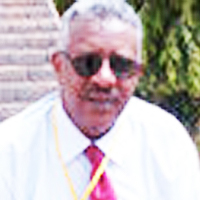Current anesthesıa for Cesarean Sectıon
Published on: 29th October, 2018
OCLC Number/Unique Identifier: 7923860444
The choice of anesthesia for cesarean section should depend on the urgency of the procedure, in addition to the condition of the mother and fetus. It is widely accepted that regional anesthesia for cesarean section is preferable to general anesthesia. Regional techniques have several advantages. They lessen the risk of gastric aspiration, avoid the use of depressant anesthetic drugs and allow the mother to remain awake during delivery. The most common type of regional anesthesia for cesarean section is spinal anesthesia because of its simplicity, cost-effectiveness and speed of onset. It is suitable for cases of an emergent cesarean delivery. Hypotension during spinal anesthesia is a common that is associated with morbidity for both mother and fetus. Epidural anesthesia is preferred when physicians want to minimize the maternal hypotension or when intense motor blockage of the thoracoabdominal segments is not desired. General anesthesia still leads to a higher maternal mortality and should be reserved for absolute emergencies and cases where neuroaxial blockade is contraindicated.
Neuro-ophthalmological emergency disorders: A general view
Published on: 27th December, 2017
OCLC Number/Unique Identifier: 7355943544
Neuro-ophthalmological emergency disorders usually occur with symptoms of visual loss, diplopia, ocular motility impairment and anisocoria. In this mini-review, we aim to take look the common neuro-ophthalmological emergency disorders. The delayed diagnosis of the neuro-ophthalmological emergencies puts the patient at risk of death or blindness. If these are well-known, the discrimination and management of these emergency conditions will be easier.Introduction
Suicide, the main cause of referral of patients from a general hospital for psychiatric evaluation
Published on: 7th April, 2021
OCLC Number/Unique Identifier: 9031333338
Introduction: Psychiatric emergencies constitute between 1% - 10% of general emergencies in Spain, of which a quarter will end up being hospital admissions. There is little literature on patients who are referred from general to specialized hospitals.
Methods: Cross-Sectional study of all the patients referred in 2018. Sociodemographic variables and clinical variables, such as diagnosis and discharge destination, were analyzed. An analysis was performed by comparing means with the Chi Square test.
Results: 433 derived emergencies were analyzed. Most of the patients were women. The main reason for derivation were suicide attempts. Of those patients, 40% required hospitalizations. More than 50% of the derived emergencies were referred to the home and followed up on an outpatient basis.
Conclusion: Most derived emergencies are referred to the home after evaluation. This implies that most are not life-threatening and that with adequate tools for evaluating suicide risk, we could avoid transfers and improve the resolution of these cases.
Emergency laparoscopic left sided colonic resection with primary anastomosis: Feasibility and Safety
Published on: 20th November, 2018
OCLC Number/Unique Identifier: 7943252570
Patients undergoing laparoscopic surgery had a lower incidence of major complications, such as anastomotic leak, intra-abdominal bleeding, abscess, and evisceration. Controversies about the operative management of left colonic emergencies are decreasing. Nowadays there is worldwide shifting towards primary resection, on table lavage and primary anastomosis. The aim of this study is to record the safety of laparoscopic primary anastomosis in left-sided colonic emergencies.
Patients: The study was carried out at Beni-Suef University Hospital, in the period between January 2016 and July 2017. Twenty-six patients were included in this study, twelve with left colon cancer, twelve with left colonic complicated diverticulitis and two cases with sigmoid volvulus. Patients presented clinically with either obstruction or perforation. All patients were subjected to laparoscopic resection, on table lavage and primary anastomosis.
Method: Decompression was done prior to starting the intervention, followed by resection and on table lavage then colorectal anastomosis using the circular stapler. The study was approved by the ethical committee in the faculty.
Results: Mean operative time: 185 min (160- 245).
LOS: 12 (10- 18).
Leak: one in obstruction group and two in perforation group.
Redo one in perforation group.
Conclusion: Emergency laparoscopic left-sided colonic resection and primary anastomosis can be performed with low morbidity, however with caution if there was free perforation with peritonitis
The New (2018) European Hypertension Guidelines an overview & comments
Published on: 24th July, 2019
OCLC Number/Unique Identifier: 8207879134
The European Society of Cardiology (ESC) and the European Society of Hypertension (ESH) jointly developed a series of hypertension guidelines in the years 2003, 207 and 2013. The most recent guidelines were issued by the two societies in August this year (2018) and were published in the European Heart Journal. The new guidelines are printed in more than 90 pages and cover almost all aspects of hypertension based on extensive review of literature giving highest priority to data from randomized controlled trials and well conducted meta-analysis. In important areas where there is inadequate or no evidence, guidelines authors resort to expert opinion. The text was developed over approximately 24 months and was reviewed by representatives of ESC and ESH national hypertension societies. Although it is less than five years since the last hypertension European guidelines in 2013, the recent 2018 guidelines show important differences in diagnosis and treatment strategies with the addition of new sections and recommendations on management of hypertensive emergencies, hypertension in women and pregnancy, different ethnic groups, chronic obstructive pulmonary disease, cancer therapies, peri-operative management, sexual dysfunction and perioperative management.
Pediatrics of disasters in the structure of professional training of pediatricians of the city children’s polyclinic to work in emergencies and terrorist acts: View from Russia
Published on: 16th February, 2022
OCLC Number/Unique Identifier: 9427642090
Introduction: Modern pediatrics of disasters is built on 5 basic principles: integrity, structure, causality, dynamism, and hierarchy.Material and methods: Methodological approaches were used: systemic, complex, integration, functional, dynamic, process, normative, quantitative, administrative, and situational, and methods: historical, analytical, and comparison. Techniques were used: grouping, absolute and relative values, detailing, and generalization.Results: The algorithms of actions of the doctor of the children’s clinic in the event of a fire, the receipt of a call about the laying of explosives and the threat of explosion were considered, the scope of the provision of first qualified aid to the pediatric nursing team was clarified. The issues of the organization of the first qualified and specialized medical care, taking into account the anatomical and physiological characteristics of children and adolescents, as well as medical tactics for small-medium, and large disasters in rural areas and cities are discussed.Conclusion: Pediatrics of disasters is an independent section of organizational and medical work in emergencies and terrorist acts, providing specialized medical care for at least 25% of victims, who are children and adolescents. The training of doctors of a specialized children’s polyclinic is regulated by regulatory documents of the Russian Federation and the Republic of Komi, Orders of the Ministry of Health of the region, a municipal formation, and a medical institution in the field of civil defense and emergency situations. In case of minor emergencies and disasters within the city boundaries with the occurrence of a single or a small number of group losses, medical support repeats that in road traffic accidents, with the exception of the organization and conduct of medical triage. In rural areas, it is required to attract additional medical and nursing teams (emergency medical aid teams), created on the basis of medical institutions of the victim and neighboring areas. At the same time, a forced maneuver by the forces and means of territorial health care is necessary for the medical evacuation of a significant part of the affected children to specialized institutions (departments) located in cities. The provision of psychological and psychiatric assistance to children and adolescents in emergencies is carried out on the basis of its basic modules (departments and offices of psychological and psychiatric assistance, and advisory mobile team of psychological and psychiatric assistance, anonymous psychological and psychiatric assistance by telephone).
Lecture: “First Aid to the Population in Case of Heat and Sunstroke during Accidents, Catastrophes, Natural Disasters and Terrorist Attacks” of the Subject “Life Safety” for Humanitarian and Technical Universities
Published on: 5th February, 2024
To prepare the population for first aid in case of heat and sunstroke in the context of global warming, algorithms for the basics of didactics of the educational topic “Heat and sunstroke” of the subject “Life safety” are proposed. The 30-year experience of teaching the subject in humanitarian state educational institutions of higher professional education of a non-medical profile in Syktyvkar is summarized. For each of the considered educational issues, a brief summary of the material presented is given.
Lecture: First Aid to the Population in Case of Traumatic Shock during Accidents, Catastrophes, Natural Disasters, and Terrorist Attacks. Anti-shock Measures in the Center of Mass Destruction and during the Evacuation Stages of the Subject Life Safety for Humanitarian and Technical Universities
Published on: 29th March, 2024
To prepare the population for first aid in case of traumatic shock, algorithms for the fundamentals of didactics of the educational topic “First aid to the population in case of traumatic shock during accidents, disasters, natural disasters and terrorist attacks” of the subject “Life Safety” are proposed. 32 years of experience in teaching the subject in humanitarian state educational institutions of higher professional education of a non-medical profile in the city of Syktyvkar are summarized. Educational questions are considered: 1) The concept of shock; 2) Traumatic shock; 3) Mechanisms of injury that contribute to the development of traumatic shock. Predisposing factors. Complications. At-risk groups; 4) Classification, phases, and degrees of shock; 5) Universal first aid algorithm; 6) Basic anti-shock measures in the source of mass destruction and at the stages of evacuation; 7) Features of anti-shock measures in children; 8) Typical first aid mistakes for traumatic shock. For each of the educational issues considered, a summary of the material presented is given. Depending on the purpose of studying the topic, purpose, content of educational material, and form of organization of training, the number of hours allocated to its presentation and study in various forms of the educational process is established. Their distribution includes 1 lecture (2 hours), 1 seminar (2), 1 practical lesson (2), and 6 hours of independent work by students.
Unusual Complications of a Dental Prosthesis Esophageal Foreign Body: About a Case
Published on: 16th April, 2025
Foreign bodies of the esophagus are part of the traumatic emergencies in ENT. They are most often encountered in children, whereas in adults they occur in a particular context and are rarely overlooked.This was a 48-year-old patient from a neighboring country referred by a colleague for a history of neglected laryngeal contusion with infectious cervical fistula evolving for 2 years. Further questioning revealed a notion of accidental ingestion of dentures. The first endoscopy was of capital interest in especially in the diagnosis and management of this long-retained foreign body. The extraction under general anesthesia was done by a combined endoscopic and external approach. The postoperative course was marked by superinfection and swallowing disorders.Cervical suppurations secondary to esophageal foreign bodies are rare, especially in adults. Clinicians should consider this possibility in the face of any chronic cervical suppuration that resists treatment.
















